Serving Waiters, Kent County
From the USS Maryland Silver Service
First Serving Waiter | Second Serving WaiterFirst Serving Waiter
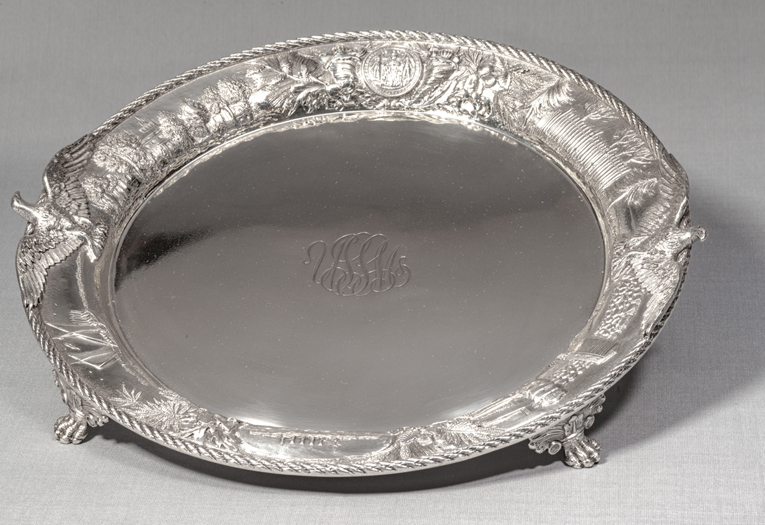
Maker: Samuel Kirk & Sons (1815-1979)
Object: Serving Waiter, Kent County (1 of 2)
Date: 1906
Medium: Sterling Silver
Dimensions: Overall height, 1 1/2"; Overall length
(eagle to eagle), 12 1/2"; Overall width (foot to foot),
13”
Accession number: MSA SC 1545-0919-1
Kent County is represented by a pair of footed serving waiters engraved with the “USSM” monogram. Kent was first mentioned as a county in 1642, only a few years after the founding of the colony in 1634. It is named for the county of the same name bordering the English Channel in southeastern England.
Although each server is engraved with four different scenes, the overall appearance of the dishes is identical. Two eagles adorn the sides of the server, while the medallions of the Great Seal and the Cruiser appear respectively on the top and bottom. Sprays of oak, yellow pine, chestnut, tobacco, goldenrod, and corn surround the seal and Cruiser, while cornucopias also flank the seal.
Scenes across the top (left to right):1. Washington College (number 128)
In 1782, the Maryland Legislature passed an act for founding a college in Chestertown, MD to be called Washington College.
It was the first college chartered in the sovereign United States, and the school was named after the, "honorable and
perpetual memory of his Excellency General Washington, the illustrious and virtuous Commander-in-Chief of the Armies of the United States."
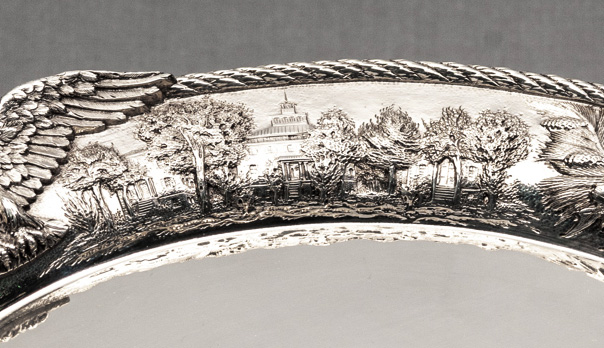
3. Claiborne’s Fort on Kent Island (number 125)
Captain William Claiborne of Virginia established the
third oldest English settlement in 1631, on the tip of
Kent Island as part of Virgina. This trading post was
established a year before King Charles I granted the
charter for the colony of Maryland to the Calvert family
in 1632.
The palisades of the fort are depicted on this serving
waiter.
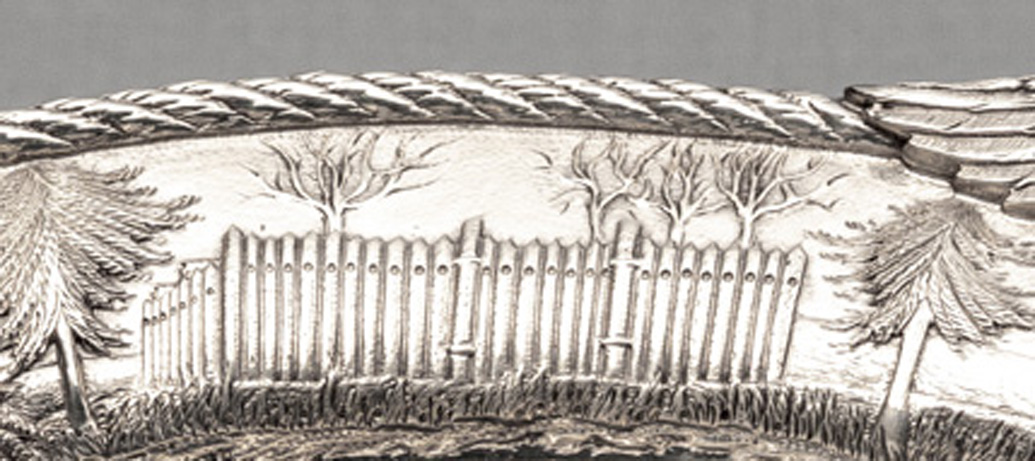
Scenes across the bottom (right to left)
1. Caulk’s Field Monument (number 126)
Caulk's Field is the site of a battle that took place between British and American forces in 1814 during the War of 1812. The monument was erected in 1902 as an appreciation of valor and patriotism on both sides of the battle.
The inscription on the monument reads:
The British commanded by Sir Peter Parker, Baronet and the Americans commanded by Col. Philip Reed met in engagement on this field Aug. 31st 1814. The British were defeated and Sir Peter Parker killed.
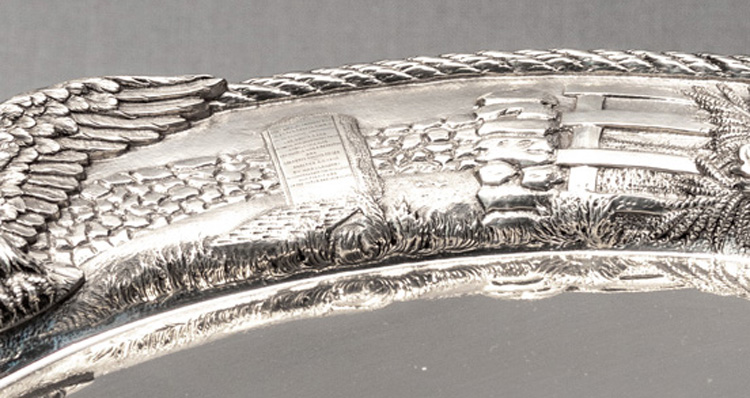
2. USS Maryland Cruiser
3. Captain John Smith’s Voyage up the Chesapeake Bay (number 127)
Captain John Smith made two voyages in the summer of 1608 to explore the Chesapeake Bay. The voyages were made in a shallop, a small six-oared vessel that could be rigged with a sail, that is depicted on the waiter. Smith charted and mapped the entire Chesapeake Bay, including its coastlines and rivers, and kept a journal of his adventures. His writings and maps included the locations and names of Native peoples and their towns.
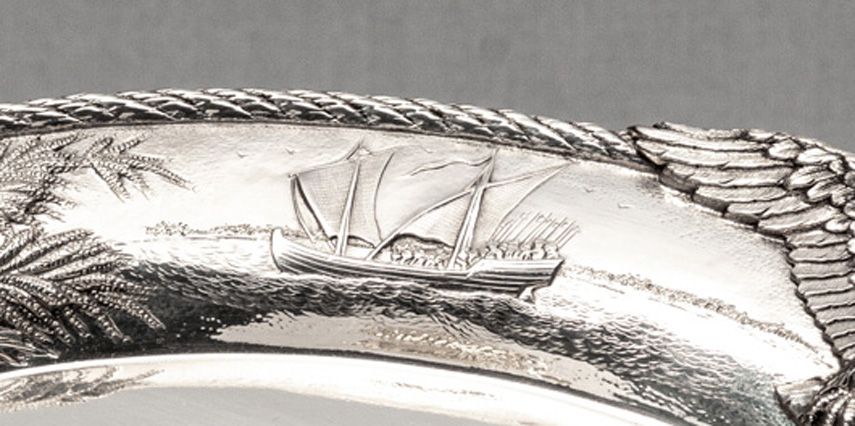
Second Serving Waiter
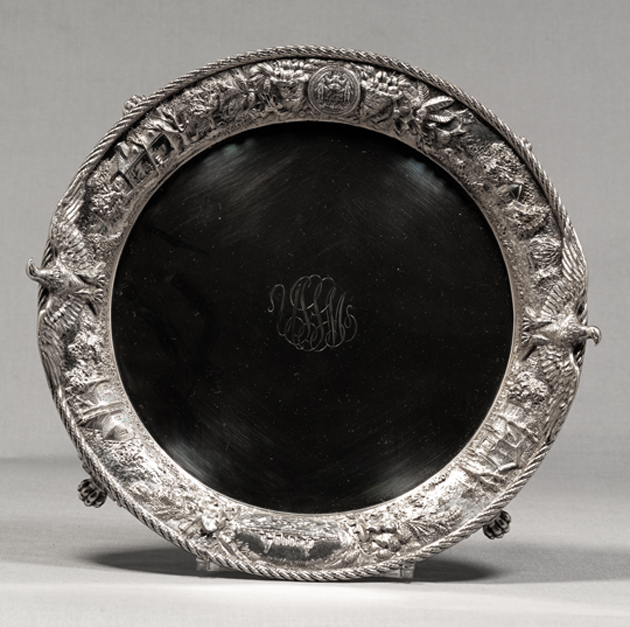
Maker: Samuel Kirk & Sons (1815-1979)
Object: Serving Waiter, Kent County (2 of 2)
Date: 1906
Medium: Sterling Silver
Dimensions: Overall height, 1 1/2"; Overall length
(eagle to eagle), 12 1/2"; Overall width (foot to foot),
13”
Accession number: MSA SC 1545-0919-2
1. Palmer House (number 132)
The Palmer House in Chestertown is one of the oldest houses in Kent County. It is also known as the "Rock of Ages" as it was the only house constructed of large stones, and remarkably, the stones are not from the area. According to local legend, Captain Palmer initially brought them over as ships’ ballast.
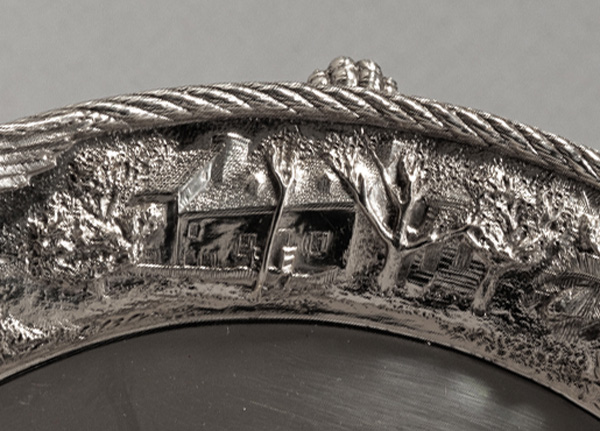
3. “Old” Saint Paul’s Church (number 129)
St. Paul’s parish was established by the Maryland Act of Assembly of 1692. It was one of the original 30 parishes of the Church of England in Maryland. The historic Epsicopal church depicted on this serving waiter was built in Chestertown in 1713 and is the oldest continuously used Episcopal church in Maryland.
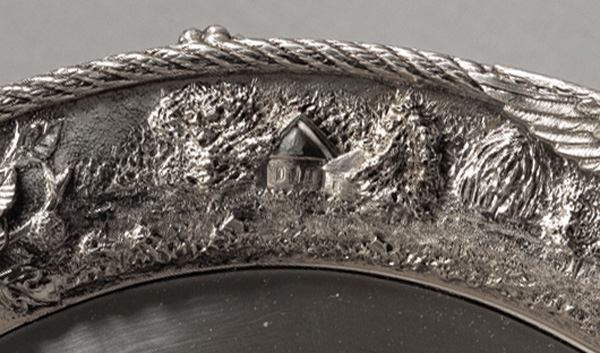
Scenes across the bottom (left to right)
1. Courthouse at Chestertown (number 130)
The courthouse depicted on this serving waiter was built on the public square of Chestertown in 1860. The exterior facade was retained when the building was remodeled and enlarged in 1937.
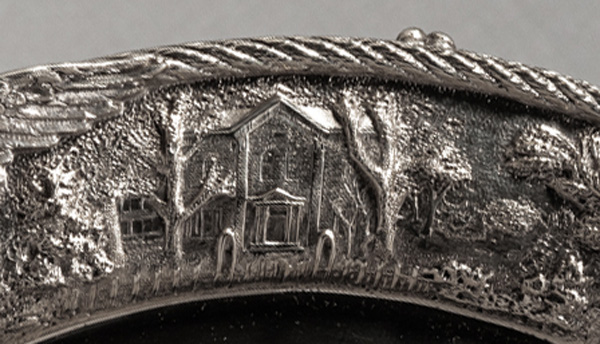
3. I.U. [St. Peter’s] Church (number 131)
The first I.U. Church built in 1768 on this spot was named [St. Peter's Church]. The second church depicted on this serving waiter, was completed in 1858 and was consecrated in 1861 by Bishop Whittingham. Two years later, I. U. Parish was established. It was added to the National Register of Historic Places in 1980.
Many of the early prominent citizens of Kent County were members of this church and are buried in its cemetery. Most notably, it is the final resting place of Colonel Philip Reed, hero of the Battle of Caulk's Field during the War of 1812, US Senator, and member of the House of Representatives.
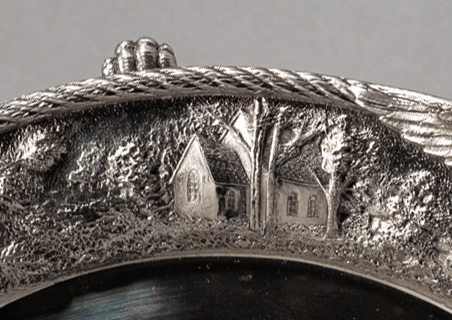
|
This web site is presented for reference purposes under the doctrine of fair use. When this material is used, in whole or in part, proper citation and credit must be attributed to the Maryland State Archives. PLEASE NOTE: The site may contain material from other sources which may be under copyright. Rights assessment, and full originating source citation, is the responsibility of the user. |
© Copyright August 07, 2024 Maryland State Archives
